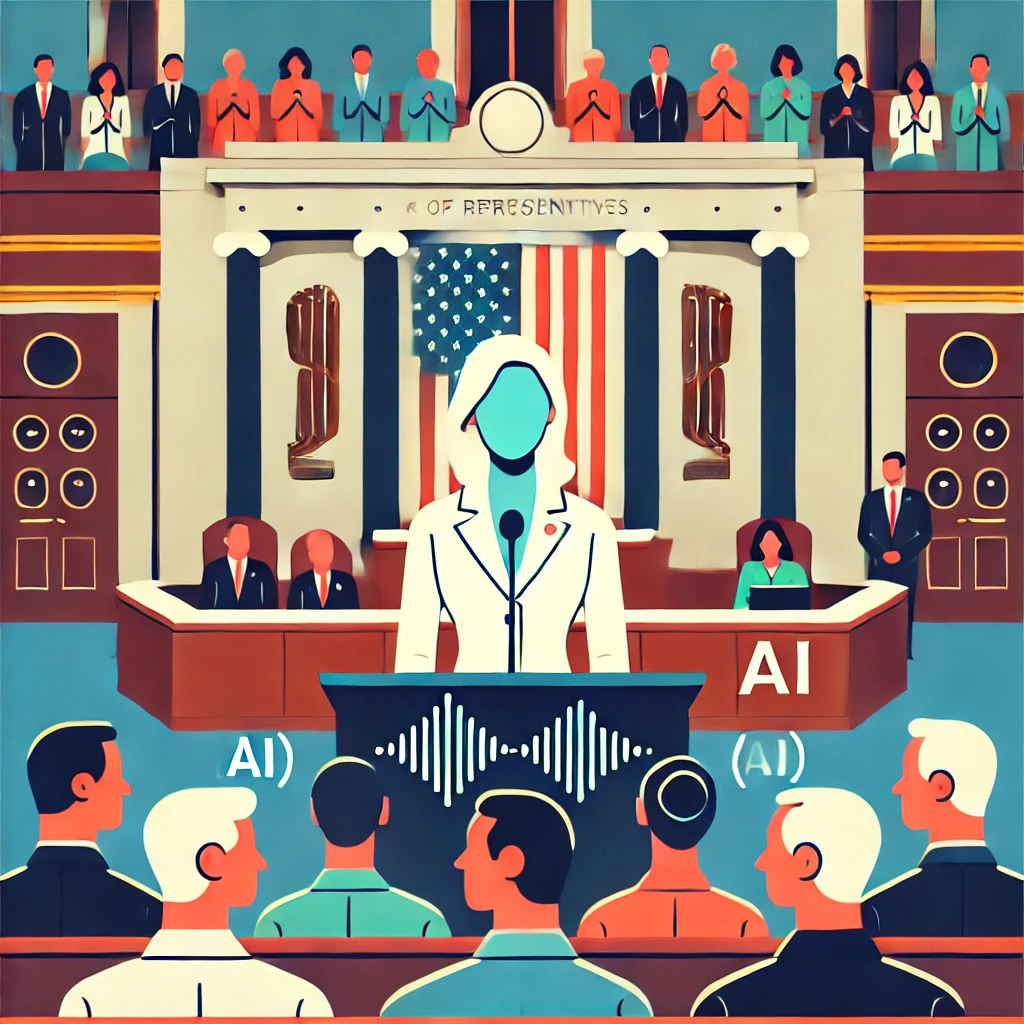Artificial intelligence (AI) is increasingly being used in the fitness industry to help people achieve their fitness goals. One example is Magic AI, a fitness software firm that offers an AI-powered personal trainer called the Magic Mirror. This touch-screen mirror plays a video of an AI trainer who generates a personalized workout program based on the user’s biometric information. The AI trainer provides feedback and suggestions during the workout, and as the user progresses, it creates new workouts. The use of AI in the fitness industry is growing rapidly, with the market estimated to be worth $7.8 billion in 2022 and projected to reach $35.6 billion by 2030.
While some people prefer the convenience and comfort of interacting with a computer, others believe that human interaction is essential for motivation and success in fitness. Pilates teacher and physiotherapist Esther Fox argues that people respond better to a human trainer because there is an emotional intelligence and connection that cannot be replicated by AI. On the other hand, British sprinter Desiree Henry, who is one of the AI trainers featured on the Magic AI fitness mirrors, believes that even during a home workout, the presence of an AI trainer can provide a sense of support and motivation.
The goal of AI fitness apps is not to replace traditional gyms but to offer an additional option for those who value flexibility and convenience. However, there are now gyms that combine AI trainers with group classes. Lumin Fitness in Dallas, Texas, for example, uses LED screens and sensors to guide up to 14 gym-goers through personalized workouts. While AI trainers provide feedback and monitor form, there is still a human trainer present to create a sense of community and provide a better overall experience.
While AI has the potential to help people progress in their exercises, it is important to note that it may not always be accurate, and consulting with a human expert is still recommended to avoid over-training or injury. However, as AI continues to learn and improve, the fitness industry expects AI fitness apps to become even better in the future.
Original news source: Can artificial intelligence help you get fit? (BBC)
🎧 Listen:
Slow
Normal
Fast
📖 Vocabulary:
| 1 | artificial | Made or produced by human beings rather than occurring naturally |
| 2 | biometric | Relating to the measurement of physical characteristics of a person’s body |
| 3 | personalized | Tailored to the individual needs or preferences |
| 4 | feedback | Information provided as a response to an action or process |
| 5 | estimated | Roughly calculated or approximated |
| 6 | projected | Predicted or forecasted to occur in the future |
| 7 | convenience | The quality of being easy to use or suited to personal comfort |
| 8 | emotional | Pertaining to feelings and the ability to understand and share the feelings of another |
| 9 | replicated | Duplicated or copied |
| 10 | flexibility | The ability to change or adapt to suit circumstances |
| 11 | sensors | Devices that detect and respond to physical properties from the environment |
| 12 | monitor | To observe and check the progress or quality of something over a period of time |
| 13 | community | A feeling of fellowship with others, as a result of sharing common attitudes, interests, and goals |
| 14 | accurate | Free from error; precise or exact |
| 15 | consulting | Seeking advice or information from someone knowledgeable in a particular area |
Group or Classroom Activities
Warm-up Activities:
– News Summary
Instructions:
1. Divide the class into pairs or small groups.
2. Give each group a copy of the article.
3. Instruct the groups to read the article and summarize the main points in a news report format.
4. Each group should present their news summary to the class, highlighting the key information and providing their own opinions on the topic.
– Opinion Poll
Instructions:
1. Divide the class into pairs or small groups.
2. Give each group a copy of the article.
3. Instruct the groups to discuss their opinions on the use of AI in the fitness industry.
4. Have each group create a set of poll questions related to the topic.
5. Each group should conduct a mini opinion poll within the class, asking their questions and recording the responses.
6. After collecting the data, each group presents their findings and leads a class discussion on the different perspectives.
– Sketch It
Instructions:
1. Divide the class into pairs or small groups.
2. Give each group a copy of the article.
3. Instruct the groups to choose a key point or concept from the article and create a visual representation of it through a sketch or drawing.
4. Each group should present their sketch to the class, explaining the meaning behind their chosen visual representation.
– Pros and Cons
Instructions:
1. Divide the class into pairs or small groups.
2. Give each group a copy of the article.
3. Instruct the groups to discuss the advantages and disadvantages of using AI in the fitness industry.
4. Each group should create a list of pros and cons, supported by evidence from the article.
5. Have each group present their lists to the class and engage in a debate or discussion about the topic.
– Future Predictions
Instructions:
1. Divide the class into pairs or small groups.
2. Give each group a copy of the article.
3. Instruct the groups to discuss and make predictions about the future of AI in the fitness industry.
4. Each group should present their predictions to the class, explaining their reasoning and providing evidence from the article to support their ideas.
5. Encourage class discussion and debate about the potential impact and challenges of AI in the fitness industry.
🤔 Comprehension Questions:
1. What is the Magic Mirror and how does it work?
2. How much is the fitness industry estimated to be worth in 2022?
3. What is Esther Fox’s argument against using AI trainers in fitness?
4. What is Desiree Henry’s perspective on the use of AI trainers in home workouts?
5. What is the goal of AI fitness apps?
6. How does Lumin Fitness in Dallas combine AI trainers with group classes?
7. What is one potential drawback of relying solely on AI trainers for fitness guidance?
8. What does the fitness industry expect for the future of AI fitness apps?
Go to answers ⇩
🎧✍️ Listen and Fill in the Gaps:
Artificial intelligence (AI) is increasingly being used in the (1)______ (2)______ to help people achieve their fitness goals. One example is Magic AI, a fitness software firm that offers an AI-powered personal (3)______ called the Magic (4)______. This touch-screen mirror plays a video of an AI trainer who generates a personalized workout program based on the user’s biometric information. The AI trainer provides feedback and suggestions during the workout, and as the user progresses, it creates new workouts. The use of AI in the fitness industry is growing rapidly, with the market estimated to be worth $7.8 billion in 2022 and (5)______ to (6)______ $35.6 billion by 2030.
While some (7)______ prefer the convenience and comfort of interacting with a computer, others believe that human interaction is (8)______ for motivation and success in fitness. Pilates teacher and physiotherapist Esther Fox argues that people respond better to a human trainer because there is an emotional intelligence and connection that cannot be replicated by AI. On the other hand, British sprinter Desiree Henry, who is one of the AI trainers featured on the Magic AI fitness mirrors, believes that even during a home workout, the (9)______ of an AI trainer can provide a sense of support and motivation.
The goal of AI fitness apps is not to replace traditional gyms but to offer an additional option for those who value flexibility and convenience. However, there are now gyms that (10)______ AI trainers with group classes. Lumin (11)______ in (12)______, Texas, for example, uses LED screens and sensors to guide up to 14 gym-goers through personalized workouts. While AI trainers provide feedback and monitor form, there is still a (13)______ trainer present to create a sense of community and provide a better (14)______ experience.
While AI has the potential to help people (15)______ in their exercises, it is important to note that it may not always be accurate, and consulting with a human expert is still recommended to avoid over-training or injury. However, as AI continues to learn and improve, the fitness industry (16)______ AI fitness apps to become even better in the future.
Go to answers ⇩
💬 Discussion Questions:
Students can ask a partner these questions, or discuss them as a group.
1. What is your opinion on using AI in the fitness industry?
2. How would you feel if your personal trainer was an AI program?
3. Do you think AI trainers can provide the same level of motivation as human trainers? Why or why not?
4. Have you ever used a fitness app or program with AI features? How was your experience?
5. What do you think are the advantages of using AI in the fitness industry?
6. Do you think AI trainers can accurately assess and monitor your progress in workouts? Why or why not?
7. How would you feel about attending a group fitness class with an AI trainer?
8. Do you think AI trainers can effectively create a sense of community in a gym setting? Why or why not?
9. Have you ever experienced a workout injury or over-training? How do you think AI could help prevent these issues?
10. What are some potential drawbacks or limitations of using AI in the fitness industry?
11. Do you think AI trainers can provide personalized workouts that are as effective as those created by human trainers? Why or why not?
12. How important do you think emotional intelligence and connection are in a fitness training program? Why?
13. Would you prefer to have a human trainer or an AI trainer? Why?
14. Have you ever felt motivated or supported by a fitness app or program? How do you think an AI trainer could provide similar support?
15. Do you think AI fitness apps will eventually replace traditional gyms? Why or why not?
Individual Activities
📖💭 Vocabulary Meanings:
Match each word to its meaning.
Words:
1. artificial
2. biometric
3. personalized
4. feedback
5. estimated
6. projected
7. convenience
8. emotional
9. replicated
10. flexibility
11. sensors
12. monitor
13. community
14. accurate
15. consulting
Meanings:
(A) Tailored to the individual needs or preferences
(B) The ability to change or adapt to suit circumstances
(C) Relating to the measurement of physical characteristics of a person’s body
(D) To observe and check the progress or quality of something over a period of time
(E) Predicted or forecasted to occur in the future
(F) Free from error; precise or exact
(G) Seeking advice or information from someone knowledgeable in a particular area
(H) Pertaining to feelings and the ability to understand and share the feelings of another
(I) Information provided as a response to an action or process
(J) A feeling of fellowship with others, as a result of sharing common attitudes, interests, and goals
(K) Duplicated or copied
(L) The quality of being easy to use or suited to personal comfort
(M) Devices that detect and respond to physical properties from the environment
(N) Made or produced by human beings rather than occurring naturally
(O) Roughly calculated or approximated
Go to answers ⇩
🔡 Multiple Choice Questions:
1. What is one example of a fitness software firm that offers an AI-powered personal trainer?
(a) FitTech
(b) GymTech
(c) Magic AI
(d) Fitness AI
2. How much is the fitness industry projected to be worth in 2030?
(a) $7.8 billion
(b) $14 billion
(c) $50 billion
(d) $35.6 billion
3. According to Esther Fox, why do some people prefer a human trainer over an AI trainer?
(a) Emotional intelligence and connection
(b) Convenience and comfort
(c) Accuracy and reliability
(d) Flexibility and customization
4. According to Desiree Henry, what can an AI trainer provide during a home workout?
(a) Support and motivation
(b) Emotional intelligence and connection
(c) Convenience and comfort
(d) Accuracy and reliability
5. What is the goal of AI fitness apps?
(a) To replace traditional gyms
(b) To provide emotional intelligence and connection
(c) To offer an additional option for flexibility and convenience
(d) To monitor form and provide feedback
6. How does Lumin Fitness in Dallas, Texas combine AI trainers and group classes?
(a) AI trainers create a sense of community and provide a better overall experience
(b) Human trainers provide feedback and monitor form
(c) AI trainers replace the need for human trainers
(d) LED screens and sensors guide gym-goers through personalized workouts
7. Why is it recommended to consult with a human expert when using AI fitness apps?
(a) To provide emotional intelligence and connection
(b) To avoid over-training or injury
(c) To offer flexibility and convenience
(d) To monitor form and provide feedback
8. What does the fitness industry expect for the future of AI fitness apps?
(a) Replacement of traditional gyms
(b) Improvement and better performance
(c) Emotional intelligence and connection
(d) Decrease in popularity
Go to answers ⇩
🕵️ True or False Questions:
1. Magic AI is a fitness software firm that offers a non-AI-powered personal trainer called the Magic Mirror.
2. Desiree Henry, a British sprinter, believes that even during a home workout, the presence of an AI trainer can provide support and motivation.
3. Some people believe that human interaction is essential for motivation and success in fitness.
4. AI fitness apps aim to offer the only option for those who value flexibility and convenience, rather than replace traditional gyms.
5. The AI trainer on the Magic Mirror does not provide feedback and suggestions during the workout.
6. Esther Fox argues that people respond better to a robot trainer because of emotional intelligence and connection.
7. The use of AI in the fitness industry is projected to reach $35.6 billion by 2030.
8. The Magic Mirror generates a personalized workout program based on the user’s biometric information.
Go to answers ⇩
📝 Write a Summary:
Write a summary of this news article in two sentences.
Check your writing now with the best free AI for English writing!
Writing Questions:
Answer the following questions. Write as much as you can for each answer.
Check your answers with our free English writing assistant!
1. What is the Magic Mirror and how does it use AI to help people with their fitness goals?
2. What is the projected worth of the AI fitness industry in 2030?
3. What is Esther Fox’s argument against using AI trainers in fitness?
4. How does Lumin Fitness combine AI trainers with group classes?
5. Why is it recommended to consult with a human expert despite using AI fitness apps?
✅ Answers
🤔✅ Comprehension Question Answers:
1. The Magic Mirror is an AI-powered personal trainer offered by Magic AI. It is a touch-screen mirror that plays a video of an AI trainer who generates a personalized workout program based on the user’s biometric information. The AI trainer provides feedback and suggestions during the workout and creates new workouts as the user progresses.
2. The fitness industry is estimated to be worth $7.8 billion in 2022.
3. Esther Fox argues that people respond better to a human trainer because there is an emotional intelligence and connection that cannot be replicated by AI.
4. Desiree Henry believes that even during a home workout, the presence of an AI trainer can provide a sense of support and motivation.
5. The goal of AI fitness apps is to offer an additional option for those who value flexibility and convenience, not to replace traditional gyms.
6. Lumin Fitness in Dallas combines AI trainers with group classes by using LED screens and sensors to guide up to 14 gym-goers through personalized workouts. AI trainers provide feedback and monitor form, while a human trainer is present to create a sense of community and provide a better overall experience.
7. One potential drawback of relying solely on AI trainers for fitness guidance is that AI may not always be accurate, and consulting with a human expert is still recommended to avoid over-training or injury.
8. The fitness industry expects AI fitness apps to become even better in the future as AI continues to learn and improve.
Go back to questions ⇧
🎧✍️✅ Listen and Fill in the Gaps Answers:
(1) fitness
(2) industry
(3) trainer
(4) Mirror
(5) projected
(6) reach
(7) people
(8) essential
(9) presence
(10) combine
(11) Fitness
(12) Dallas
(13) human
(14) overall
(15) progress
(16) expects
Go back to questions ⇧
📖💭✅ Vocabulary Meanings Answers:
1. artificial
Answer: (N) Made or produced by human beings rather than occurring naturally
2. biometric
Answer: (C) Relating to the measurement of physical characteristics of a person’s body
3. personalized
Answer: (A) Tailored to the individual needs or preferences
4. feedback
Answer: (I) Information provided as a response to an action or process
5. estimated
Answer: (O) Roughly calculated or approximated
6. projected
Answer: (E) Predicted or forecasted to occur in the future
7. convenience
Answer: (L) The quality of being easy to use or suited to personal comfort
8. emotional
Answer: (H) Pertaining to feelings and the ability to understand and share the feelings of another
9. replicated
Answer: (K) Duplicated or copied
10. flexibility
Answer: (B) The ability to change or adapt to suit circumstances
11. sensors
Answer: (M) Devices that detect and respond to physical properties from the environment
12. monitor
Answer: (D) To observe and check the progress or quality of something over a period of time
13. community
Answer: (J) A feeling of fellowship with others, as a result of sharing common attitudes, interests, and goals
14. accurate
Answer: (F) Free from error; precise or exact
15. consulting
Answer: (G) Seeking advice or information from someone knowledgeable in a particular area
Go back to questions ⇧
🔡✅ Multiple Choice Answers:
1. What is one example of a fitness software firm that offers an AI-powered personal trainer?
Answer: (c) Magic AI
2. How much is the fitness industry projected to be worth in 2030?
Answer: (d) $35.6 billion
3. According to Esther Fox, why do some people prefer a human trainer over an AI trainer?
Answer: (a) Emotional intelligence and connection
4. According to Desiree Henry, what can an AI trainer provide during a home workout?
Answer: (a) Support and motivation
5. What is the goal of AI fitness apps?
Answer: (c) To offer an additional option for flexibility and convenience
6. How does Lumin Fitness in Dallas, Texas combine AI trainers and group classes?
Answer: (d) LED screens and sensors guide gym-goers through personalized workouts
7. Why is it recommended to consult with a human expert when using AI fitness apps?
Answer: (b) To avoid over-training or injury
8. What does the fitness industry expect for the future of AI fitness apps?
Answer: (b) Improvement and better performance
Go back to questions ⇧
🕵️✅ True or False Answers:
1. Magic AI is a fitness software firm that offers a non-AI-powered personal trainer called the Magic Mirror. (Answer: False)
2. Desiree Henry, a British sprinter, believes that even during a home workout, the presence of an AI trainer can provide support and motivation. (Answer: True)
3. Some people believe that human interaction is essential for motivation and success in fitness. (Answer: True)
4. AI fitness apps aim to offer the only option for those who value flexibility and convenience, rather than replace traditional gyms. (Answer: False)
5. The AI trainer on the Magic Mirror does not provide feedback and suggestions during the workout. (Answer: False)
6. Esther Fox argues that people respond better to a robot trainer because of emotional intelligence and connection. (Answer: False)
7. The use of AI in the fitness industry is projected to reach $35.6 billion by 2030. (Answer: True)
8. The Magic Mirror generates a personalized workout program based on the user’s biometric information. (Answer: True)
Go back to questions ⇧













